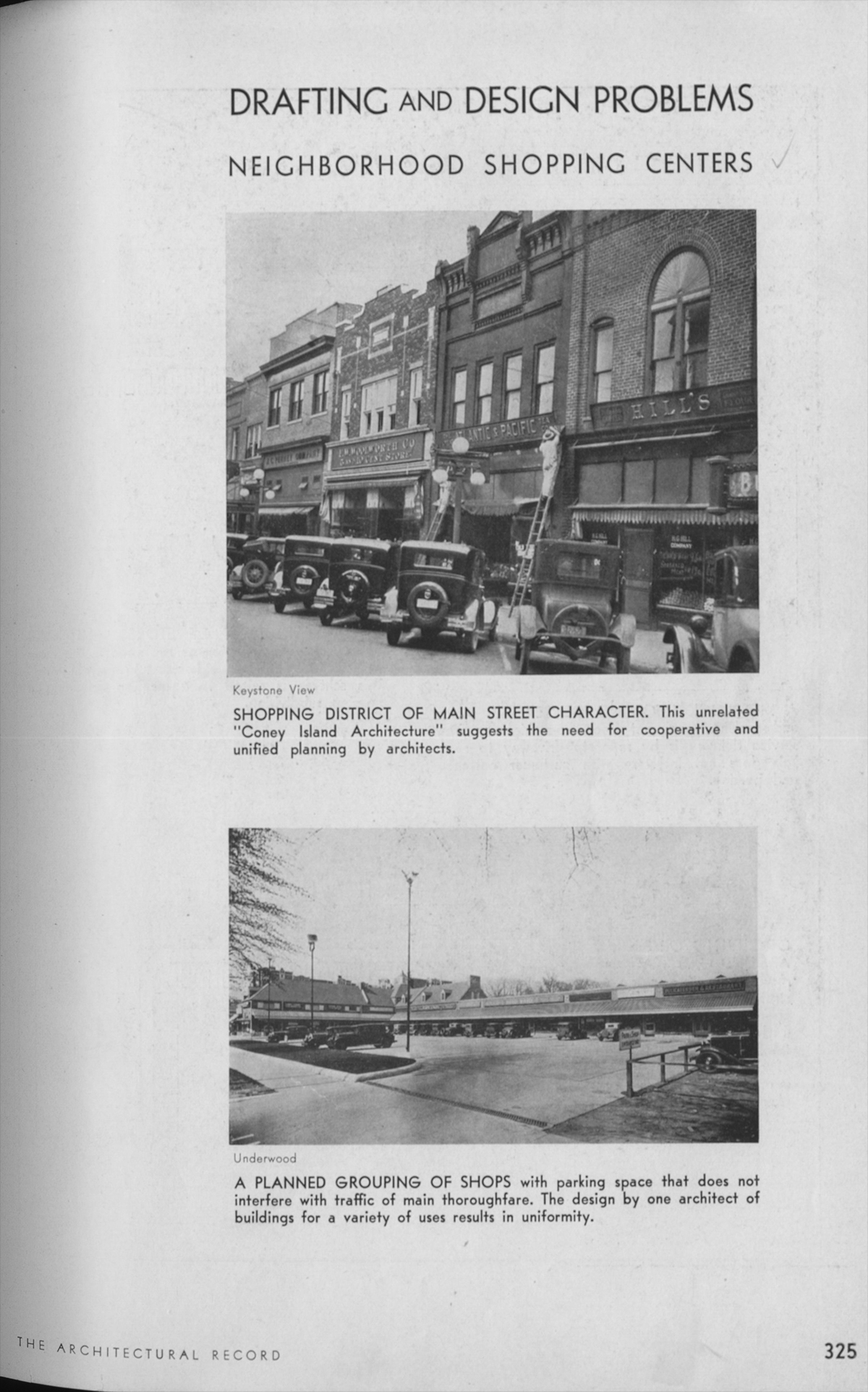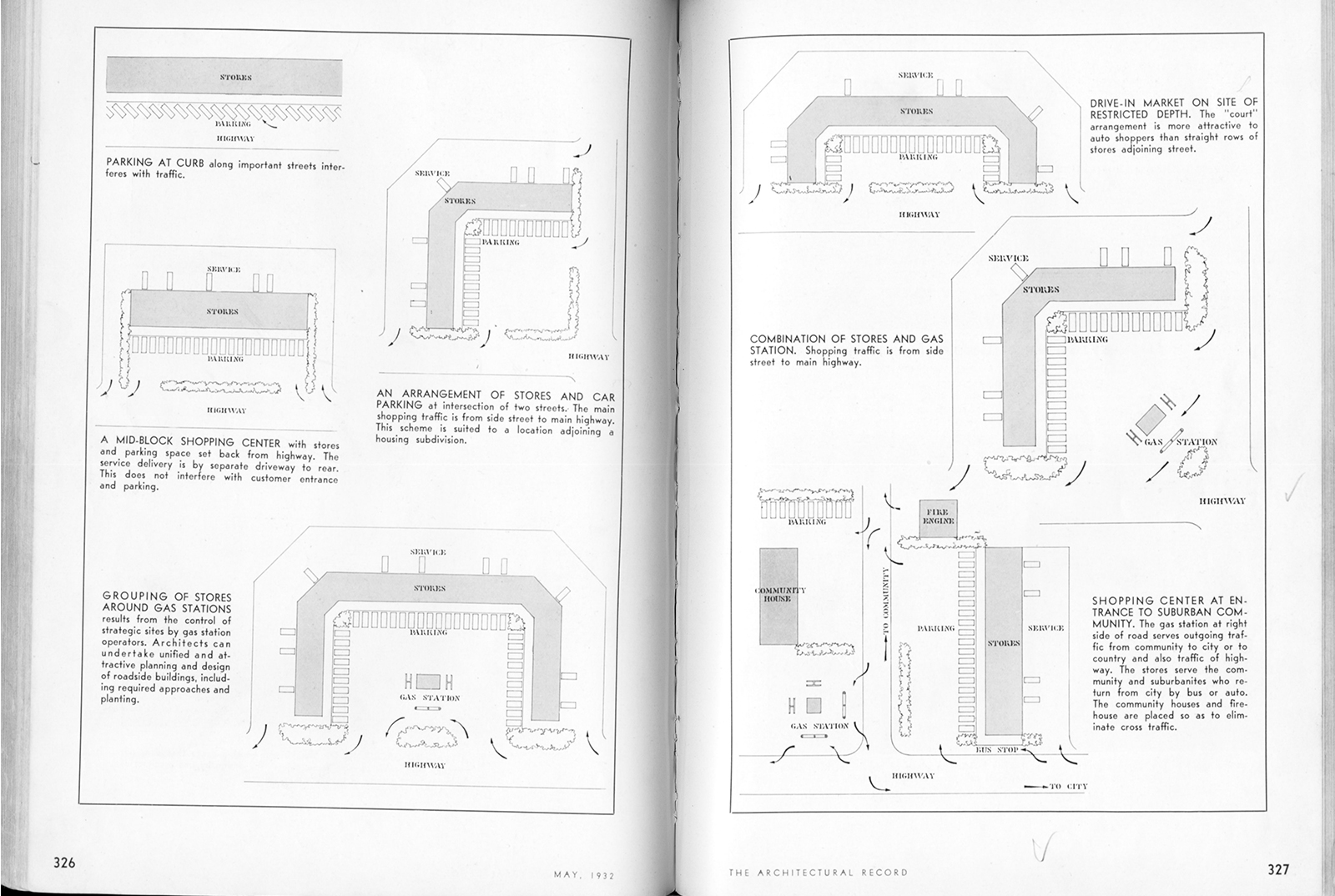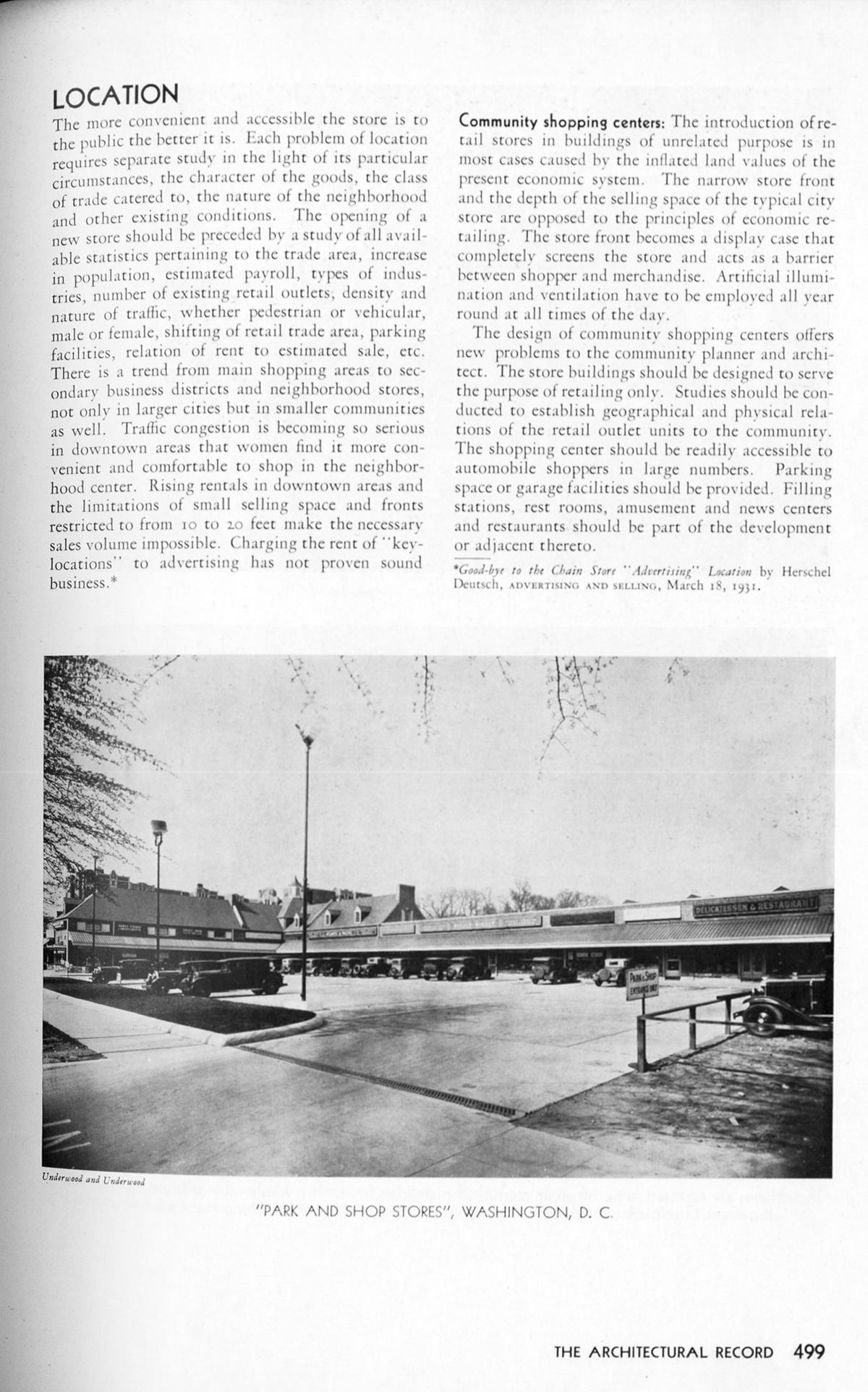
I think a number of people are perplexed as to why Sam’s Park & Shop in Cleveland Park is landmarked. Aside from the political pressure of a well-connected population dead set on preventing the density that would actually save their failing retail strip using historic preservation laws, the site does have some significance.
The Park & Shop was point along the trend to adapt retail architecture to modern conditions. In this page from the May 1932 Architectural Record, the author praised the Park & Shop in contrast to a traditional main street retail strip. He might as well have been describing the service lane block.
I think a lot of people look back on the beginnings of autocentric planning and think that the people who conceived it must have been deluded, but to them these choices seem eminently rational. A lot of people also seem to pin the autocentric turn on the Modern Movement and Le Corbusier in particular. This issue of the Record points in another direction: it is unequivocal about the need to redesign retail for the automobile, and merely reports on the International Style as an interesting trend in Europe with good goals.
If anything, Modernism was just a way to aestheticize the rationalist fixations of Modernity like efficiency, objectivity, or hygiene. After all, the first auto-oriented shopping malls were executed in historicist styles. The movement away from urban life began well before that, although Modernists certainly took it further.
It’s a complicated story, one that I don’t really know much about. Luckily, one of my professors, David Smiley, wrote a book about it. Pedestrian Modern, how the desire to accommodate the automobile and pedestrian safely crossed with American modernists’ interest in retail, before 1960s radicalism made that contaminated.
Our Park & Shop comes in towards the beginning of the story.
Architects were grasping how to design for a motoring consumer. They started by expanding the curbside into a parking lot:
A 1932 Architectural Record article on “neighborhood shopping centers” perhaps explains why shopping projects of the interwar period did not quite challenge the curbside paradigm. Buried in the “Drafting and Design Problems” section of the magazine were two juxtaposed images – a typical Main Street with “Coney Island Architecture” and a “planned grouping” of stores set back to make room for parked cars. The former image implied congested conditions where parking was difficult, the building were “confused,” and the street lacked design coherence. The latter image, by contrast, so that order, coordination, and “uniformity,” and abundant parking were all evident. The shopping center shown was the 1930 Connecticut Avenue Park and Shop, in Washington, DC, which Knud Lönberg-Holm had lauded as utterly rational in his 1931 Record article on stores. Set back from the road and making space for the then technological “fact” of the car, the center appeared to rationalize and make more efficient the elements of the new metropolis. Merchandizing was, in these terms, one among many social programs that could be made to function “better.” … Frey, Kocher, and Lönberg-Holm saw in this project a rational approach to the retailer’s need to accommodate a new set of auto-borne customers – the shopper was a driver, not yet a pedestrian. (Smiley, 130)
The parking configurations try to make sense of the flow of automobiles, paying particular attention to making parking easy for women, who the article points out, did most of the shopping:
These represent ideal conditions to the author. Smiley also describes the efforts to retrofit existing cities:
In a process akin to urban bricolage, not yet urban renewal, they considered the turning radius of the car, raised platforms connecting older buildings, ramps or lots squeezed into unexpected places, new technologies, alleys remade into walkways – in sum, they attempted to reimagine the older fabric as an integral part of something new. (Smiley, 132)
Ultimately, these “expanded curbs” couldn’t solve the parking problem. Designing for single-use convenience led naturally to the interiorized shopping mall. Everyone involved wanted to keep the “king’s way” clear for the flow of automobiles and create comfortable places to stroll while shopping. The mess of a city street impeded this. First they brought coherence, then centralization, then separation, and finally climate control, and now have the pedestrian-oriented shopping mall. All it took was making it impossible to walk when you’re not in a mall.
Given the growth of internet shopping, how Cleveland Park’s retail will cope remains an open question. But the history of designing for parking suggests that it would kill Cleveland Park, rather than save it.
Here is the coverage of the Park & Shop in 1931.


